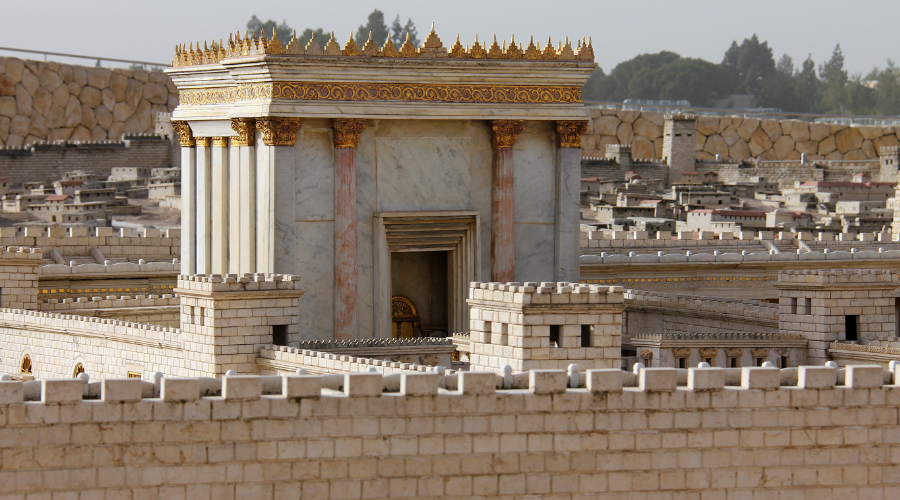
Why Did God Call Jesus the “Lamb of God”?
The Bible calls Jesus the “Lamb of God” because it’s a special name that shows how He saves us. Just like lambs were used in sacrifices long ago, Jesus gave His life to take away our sins. God planned this from the very beginning!
A Story That Starts in the Old Testament
- In Abraham’s time, God provided a ram (a male sheep) to save Isaac. This was a clue that one day He’d send Jesus, the true Lamb (Genesis 22:13-14).
- At Passover, lambs’ blood protected Israel from death. Jesus’ blood does something even bigger: it protects everyone who trusts Him (Exodus 12:13).
Jesus Fulfills the Promise
John the Baptist shouted, “Look! This is God’s Lamb, who takes away the world’s sin!” (John 1:29). Jesus wasn’t just another sacrifice—He was perfect. When He died on the cross, He took the punishment we deserved. But He didn’t stay dead! He rose again, proving He’s the Lamb who beats death and rules forever (Revelation 5:6-12).
Why It Matters
Jesus is called the Lamb of God because:
- He’s sinless (no mistakes!).
- His blood washes away our sins.
- He’s the final sacrifice—we don’t need any others.
In this blog, we’ll explore 9 reasons why this name matters. Every story in the Bible points to Jesus, the Lamb who loves us and saves us!
The phrase ‘Lamb of God’ might seem confusing at first—why is such a gentle, innocent animal used to describe Jesus? In the Bible, lambs are closely tied to sacrifice and redemption. We’ve seen this in the Passover. We also see it in reference to Jesus and His death.
Today, I’m excited to talk about 9 reasons Jesus is called the Lamb of God, and what that means.
Why must the sacrifice of lamb be used to symbolize forgiveness of sins?
The first time we see a reference to Jesus as the Lamb is foreshadowed in the Old Testament story of Abraham and Isaac. Abraham walks in faith in an unimaginably difficult moment, and God provides a ram for the burnt sin offering. God promised a lamb but provided an adult ram.
We see the lamb again in the story of the Passover, when the Israelites are instructed to slaughter a lamb and brush the blood on their doorways. The presence of the blood signaled death to pass over their house. The blood of the lambs saved God’s people.
When we come to the New Testament, Jesus is called the Lamb of God by John the Baptist. In Revelation, Jesus is referred to as the Lamb nine times—each showing His victory, glory, and divinity.
Before that, though, we see Christ as the sacrificial Lamb of God who takes away the sin of the world. This reference to Jesus helps us understand who He is and why His death brings salvation.
Lamb of God Definition
What does Lamb of God mean? Put simply, when the Bible speaks about the Lamb of God, it is referring to Jesus Christ. He is the sacrificial lamb—spotless and blameless—who died to take away sin once and for all.
Deeper Understanding
When we understand Jesus as the Lamb of God, scripture leaps off the page.
When we experience scripture through more of our senses, we have a deeper understanding of the personal nature of the Gospel.
The Word of God becomes more vibrant — alive in full color.
God’s design for our lives includes much symbolism and many opportunities unite our hearts, minds, spirits, and bodies – ALL of our senses – to the Truth! When we feel the truth of God’s Word to the depths of every part of our being, there’s no denying God as Creator or why His Son came to earth.
He came for you. You are the reason!
You are the reason Jesus shed His blood on the cross—the ultimate, perfect sacrifice of the Lamb.
Today, I want us to look at the connection between symbolism and the meaning of the LAMB in the Old Testament and the New Testament.
Why is Jesus Called the Lamb of God?

1 – He was born in Bethlehem
The Levites (priests) raised lambs in Bethlehem. They sacrificed lambs in the temple.
Moreover, they were the shepherds who first visited Jesus when He was born.
The priests received the lambs to be sacrificed. How fascinating that the Levitical priests received the announcement of Christ’s birth first. Most likely, they didn’t realize the great honor the Lord bestowed on them by making them the first to receive the Lamb of God.
Bethlehem is also known as the house of bread. Jesus declared He is the Bread of Life.
Only God could align these details so beautifully—the Lamb of God born in Bethlehem to be the sacrifice for all.
2 – John the Baptist
John the Baptist, a priest from the Levitical line, called Jesus the Lamb of God. The priests identified the lambs for sacrifice. John, who had authority through his priestly bloodline, announced Jesus’ identity to the world.
The baptism we see John the Baptist perform in John 1 represented going down and coming up. When this announcement was made at the scene of baptism (John 1:29), the people received this word much differently than we do. His calling Jesus the Lamb of God was infused with symbolism, including, but not limited to:
- lambs as symbols of sacrifice for sin and peace offerings (Leviticus 23:19)
- the messianic lamb would be led to slaughter (Isaiah 53)
- the connection to the Passover Lamb in Exodus
- the images of deliverance from bondage
3 – He fulfilled the story of Abraham and Isaac
- Abraham took a donkey with two men. Two disciples went to get the donkey for Jesus when He entered Jerusalem before His crucifixion.
- Abraham took his son (his firstborn and only son of Sarah). When Isaac asked where the sacrificial lamb was, Abraham answered that God would provide. God provided His own Son as the sacrificial lamb to stand in the place of each of us.
- Isaac carried the wood on his back to be led to the slaughter. Jesus carried the cross on his back to his own crucifixion.
- God knew Abraham’s heart was pure. God intervened and provided a ram. (Fun fact: A sheep is considered a lamb for its first year. A female lamb becomes a ewe, and a male lamb becomes a ram.) In Jesus, God delivered His Son as the Lamb of the final offering for sin.
- Abraham offered his son on Mount Moriah. Jesus was offered up on the same mount.
4 – Jerusalem

All lambs had to be brought to Jerusalem (from where they were raised in Bethlehem) and be offered to the high priest. Jesus entered Jerusalem riding on a donkey and went to the temple. He cleansed it to prepare for a true, pure, perfect sacrifice.
5 – The Passover Lamb
The father of the family chooses the lamb at Passover. Furthermore, our Father chose Jesus… The Lamb of God.
The Passover instructions declare 1 lamb per family. All who are in Christ are 1 family.
6 – 4 days
It takes 4 days to inspect the Passover lamb. In the same way, the people of Jerusalem tested, quizzed, and challenged Jesus for 4 days. These people include the high priest, Sanhedrin, Pharisees, Sadducees, and others.
7 – Spotless
Jesus was without spot or blemish. Spotless means pure and blameless. Physically, we see it as without sickness, disease, or skin spots. His skin was clean and clear of any disease or blemishes. Spiritually, it means without blame and harmless. He didn’t harm anyone and always spoke God’s Word.
8 – The times of sacrifice

The sacrifices occurred in the morning and evening. These times coincide with our clocks at the times of 9 am and 3 pm. By 3 pm, the Passover lambs were killed. (Remember, 1 lamb per family, so there was a lot of sacrificing going on.)
Jesus was placed on the cross at 9 am, the time of the morning sacrifice. He died at the time of the evening sacrifice. The sun was covered from noon until 3 pm, then He died. (See Mark 15 & Matthew 27)
Jesus fulfilled every instruction from Exodus 12. Every one!
9 – One-year-old lamb
A lamb was considered in the prime of its life. Jesus, at age 33 and only 3 years into his ministry, was considered in the prime of His life.
Conclusion
So much of scripture testifies to Jesus being the sacrificial Lamb of God! There’s more than I have time to cover in this post.
I hope the main point is clear: Jesus was the perfect, unblemished Lamb of God who took away our sins for eternity. We can either live in the gift of salvation or we can live without it.
It’s your choice!
Jesus fulfilled every image, prophecy, and requirement of the lamb—becoming the perfect sacrifice. We can choose to accept the gift of salvation or reject it. But there will never be another lamb. Jesus is THE Lamb.
Have you recognized Jesus as the Lamb of God? Have you repented and received the salvation offered through the blood of the Lamb?
Jesus is the final sacrifice. The perfect sacrifice. The one who takes away the sin of the world.
Explore More in The Bible Diet Collection
If the symbolism of Jesus as the Lamb of God has stirred something in your heart, take your journey deeper with The Bible Diet Collection. Discover how ancient biblical wisdom connects body, soul, and spirit in a powerful way. You’ll receive:
- New Bible Diet Course: Ancient wisdom for your body
- Over 200+ Bible Diet Recipes: Family favorites & natural nutrients
- Included Courses: Treasures of Healthy Living, Daniel Fast, 40-Day Transformation, and more
- Bonus Content: Grocery shopping guides, memory verse cards, and an in-depth biblical food study
Whether you’re exploring scripture for healing, nourishment, or renewal, this collection brings biblical truth to your daily life. Discover how the foods of the Bible, the symbolism of sacrifice, and the blood of the Lamb all point to one powerful truth: Jesus saves.




